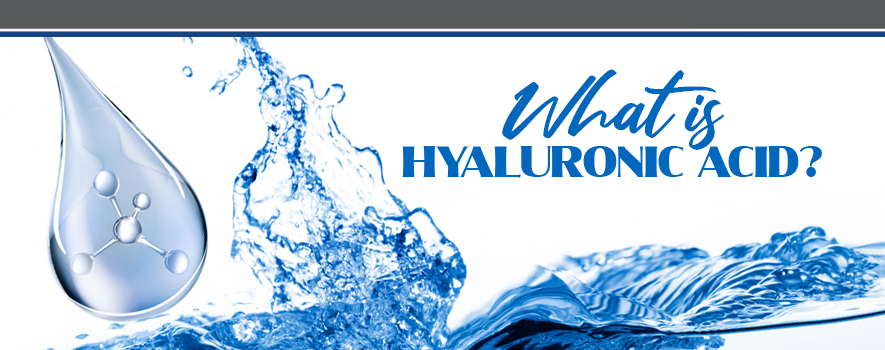Hyaluronic acid may sound a little scary but no need to worry, it’s completely safe. For starters, it’s important to know that hyaluronic acid is naturally produced by the human body and is found in the skin, joints, and eyes. Hyaluronic acid may also be referred to as hyaluronan or simply HA for short.
Specifically, you will find the highest volume of hyaluronan in the skin. HA helps keep the skin smooth, soft and supple. Have you ever wondered why babies’ have such soft skin? Well, HA levels are highest at birth, which accounts for the buttery soft skin characteristics of babies. As we age, our naturally produced HA content declines in both quality and quantity. It is estimated that by the time we reach 70, we will have lost about 70% of our total HA content.
Why is it necessary?
Without hyaluronan, the epidermal matrix cannot readily store moisture and may begin to dry out, resulting in leathery, wrinkled skin. Hyaluronan works with collagen to support the skin and keep it looking youthful. The structural characteristics of hyaluronan are ideal for moisture retention and tissue hydration – the molecule is able to retain and deliver almost 1,000 times its weight in water, crazy right?!
HA is a common ingredient in many anti-aging products and has become a skincare must-have for hydration.
With HA on the rise in all industries, it is important to understand that not all hyaluronic acids are equal. HA must be absorbable to be most effective. For the skin to benefit from topical application of HA, the molecule must be readily available for the skin to absorb. High molecular weight hyaluronic acid is not small enough for absorption and so, lays on the surface of the skin. On the other hand, smaller molecules of hyaluronic acid are easily absorbed by the skin and penetrates deeper. This works better for tissue hydration and long-term skin health.
Where does it comes from?
Additionally, it’s important to know where HA comes from. HA comes from different sources, including plants and animals. Like humans, animals naturally produce HA and this is used as a main source. While animal-derived HA is still vastly used, most prefer vegan hyaluronic acid over animal-derived. Vegan HA is sourced through microbial fermentation and is ideal for skincare purposes.
Glysyn® Hyaluronan – The Superior HA
Glysyn Hyaluronan is top of the line in hyaluronic acid, and here’s why:
- 100% vegan, as it is sourced through microbial fermentation.
- Utilizes an HA molecularly tailored for topical use and maximum absorption
- 98% pure HA and contains no other additives, which alleviates the concern of allergic reactions
- Naturally safe for all skin types
- Paraben-free & Cruelty-free
- Made and distributed in America: Lexington, Kentucky.


Recent Comments